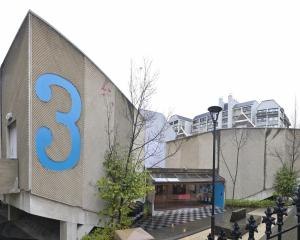Southland is set to be an exporter of electricity despite two planned data centres, a renewed 20-year power deal to keep the Tiwai Point aluminium smelter open and a proposed hydrogen production facility all set to gobble up power in the South.
Datagrid, T4 and Southland Southern Green Hydrogen (SGH) have announced plans to establish facilities in the Invercargill region.

Great South regional development agency chief executive Chami Abeysinghe said the hydrogen plant, with plans to export its green ammonia to Asia, was progressing through its evaluation processes.
While Great South predicted the industrial demand on electricity would rapidly increase in the next 10 years, Southland was on track to be a net exporter of electricity.
Ms Abeysinghe said the region’s current electricity demand was about 940MW.
That was expected to grow to about 1500MW by 2035 and keep increasing to
meet the region’s needs of residential, industrial, commercial and transport needs including the hydrogen plant.
"With 2800MW of new wind projects moving through the consent and evaluation process, Southland’s vast renewable energy generation potential is being developed," she said.
"The energy generated through these and other renewable energy projects will service both local needs and the needs of other regions throughout New Zealand."
In June, after Rio Tinto confirmed the Tiwai Point smelter would remain open, Mercury Energy announced it would expand its Kaiwera Downs wind farm from 10 turbines to 36 larger turbines by the end of 2026.
Mercury Energy general manager portfolio Phil Gibson told the Otago Daily Times the amount of power produced at the wind farm was about what was needed for the company to supply Tiwai Point.
Contact Energy is planning a large wind farm in the Slopedown area while Pioneer Energy and Manawa Energy are proposing a wind farm between Clinton and Balclutha.
Major investment from Transpower will enable more power to be transmitted from the area.
T4 chief executive Dean Addie said it expected to use about 2MW of power during stage one with solar power assistance to limit the draw from the national grid.
Green energy was important to thecompany.
"On a global scale this data centre development is tiny, but it is critical we develop with environmental sustainability as a core pillar."
T4 was also in discussion to capture the centre’s generated heat to be used in glasshouses.
"Every part of this journey is sustainable, the heat created by the data centre will be going back to the Southland community with the possibility of supporting agriculture."
Mr Addie hoped T4 Group’s future would eventually grow Southland into a tech hub that would attract international talent to the region.
Datagrid chief executive Perrine Dhalluin said it expected construction to start on its Makarewa data centre park by 2026 once resource consents had been obtained for the 43ha site, which would have a dedicated power substation and submarine data cable landing station connecting Southland to Australia.
"This is an ambitious timeline, but we are confident it is achievable with a favourable decision on our resource consent."
Southland had competitive advantage over other locations in Asia-Pacific because its cooler climate reduced energy demands.
It was expected the Makarewa park would draw up to 600MW, and 1GW in the future.
"This kind of power supply is well beyond what is currently available at the site, however Datagrid is looking to partner with New Zealand power generators to see how we can build a competitive solution that will convince international AI operators to choose New Zealand."
Transpower grid development executive general manager John Clarke said it had been working with local lines company PowerNet in supporting the Southland Murihiku Regional Energy Strategy to ensure electricity infrastructure in the region was well equipped to service both the growing demand, recently announced and potential new generation.
"We have released our regional electrification development plan which outlines our road map for investment to support this.
"The development plan sets out several upgrades to Transpower’s network which would increase transfer capacity on our transmission lines."
Tiwai’s plans to continue operations would not impact its investment decisions but did provide more certainty around projected electricity demand and the need to investigate longer-term investments identified in the regional plan.
While Transpower was monitoring project update, there was not enough certainty around the size and timing of the projects to inform its decisions about specific transmission grid investments, he said.
— Toni McDonald













